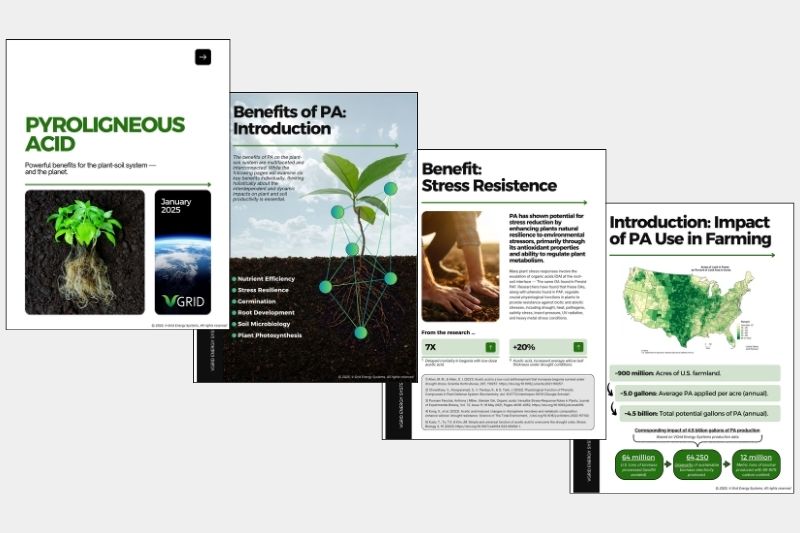VGrid Energy Systems and Persist Products have issued a new white paper titled: “Pyroligneous acid: Powerful benefits for the plant-soil system — and the planet.” This comprehensive report highlights the latest research and trial data on pyroligneous acid (PA). The accompanying white paper, available for download at https://persistproducts.com/pa-white-paper/, explores how plants have evolved to respond strongly to post-wildfire conditions.
PA, derived from the condensate created during the thermal decomposition of biomass (e.g., pyrolysis, gasification, combustion), is commonly referred to as liquid smoke, pyrolysis liquid, or wood vinegar. When applied to soil, it replicates the natural responses of seeds and plants observed after a wildfire, including:
- Enhanced germination and root development.
- Stronger microbiological activity in soil.
- Improved nutrient availability.
- Boosted stress defense.
- Increased photosynthetic rates.
PA is typically made within a process that generates renewable biomass energy and biochar, providing durable CO₂ removal and helping combat climate change while providing numerous environmental co-benefits. Widespread adoption of PA in U.S. agriculture could offer the key to scaling carbon removal, potentially yielding the following impacts:
- 76.6 million equivalent metric tons of CO2 removed (annually).
- 64,250 gigawatts of sustainable electricity produced (annually).
- 64 million tons of waste avoided from burning or landfills (annually).
- 6 trillion gallons of irrigation water saved (annually).
- 3-million-ton reduction in synthetic fertilizers (annually).
The release of this white paper underscores VGrid’s dedication to providing growers with innovative solutions that balance sustainability and productivity. Jeff Norton, VGrid’s Vice President of Business Development, stated, “This white paper highlights not only the science behind PA but also its ability to equip growers with a sustainable and effective tool to address the challenge of feeding a growing global population amid increasingly limited resources.”
# # #

